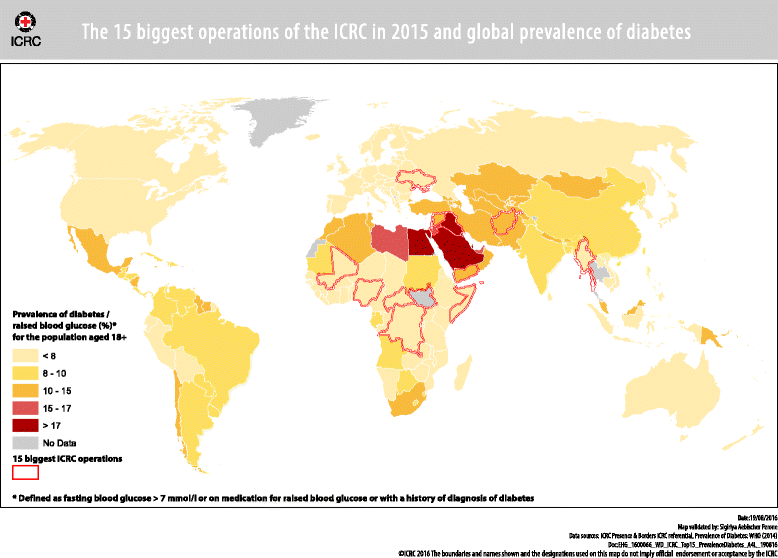Non-communicable diseases in humanitarian settings: ten essential questions
- PMID: 28932259
- PMCID: PMC5602789
- DOI: 10.1186/s13031-017-0119-8
Non-communicable diseases in humanitarian settings: ten essential questions
Abstract
Non-communicable diseases (NCDs) represent the primary cause of morbidity and mortality worldwide. Specific attention needs to be given in fragile and crisis-affected contexts, where health systems have even more difficulties in addressing and managing these diseases. Humanitarian actors intervening in crisis situations increasingly include NCD management in the services they support and provide. This review aims at presenting a series of questions that humanitarian agencies could consider when addressing NCDs in humanitarian crises. They include, among others, what conditions to address and for which target population, how to ensure continuity of care, which guidelines and medications to use, and what can be done beyond classical management of NCDs.Research and evidence are lacking on how to address care effectively for NCDs in emergencies. Therefore, advocacy is needed for NCD-oriented research so as to make interventions more effective and sustainable. No government or single agency can address NCDs in humanitarian crises alone. Strong leadership and partnerships between humanitarian actors, health providers, government bodies, research and academic institutions are required. Only a coordinated multi-disciplinary and multi-stakeholder approach will achieve the required impact for affected populations.
Keywords: Chronic diseases; Conflicts; Continuum of care; Crises; Ethics; Humanitarian agencies; Humanitarian emergencies; Non-communicable diseases.
Conflict of interest statement
Ethics approval and consent to participate
Not applicable.
Consent for publication
Not applicable.
Competing interests
All authors are staff of the International Committee of the Red Cross (ICRC) and/or of Division of Tropical and Humanitarian Medicine of the Geneva University hospitals (HUG) and paid by the ICRC and/or HUG for their involvement humanitarian projects.
Publisher’s Note
Springer Nature remains neutral with regard to jurisdictional claims in published maps and institutional affiliations.
Figures
References
-
- World Health Organization (WHO). World Health Statistics 2016: Monitoring health for the SDGs. World Health Organization. 2016.
-
- International Committee of the Red Cross (ICRC). Non communicable diseases in health interventions, guiding principles. International Committee of the Red Cross. 2012.
-
- Halford G. Prevalence of Diabetes in ICRC Supported Physical Rehabilitation Centers. International Committee of the Red Cross. 2016;
-
- World Health Organization (WHO). Environmental health in emergencies and disasters: a practical guide. World Health Organization. 2002.
Publication types
LinkOut - more resources
Full Text Sources
Other Literature Sources


